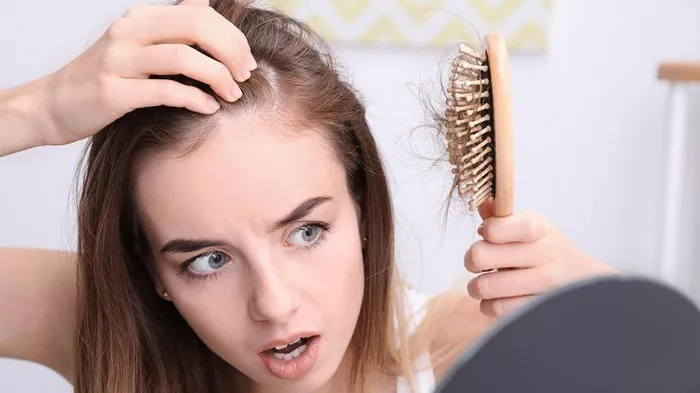For many, the transition from summer to fall brings not only a shift in weather but also an unexpected change in their hair. It’s a phenomenon that leaves some women concerned and seeking answers. Dermatologists like Dr. Christian Merkel from Munich often witness a surge in patients experiencing increased hair loss during the autumn months, and they are not alone in their struggle.
“As we approach fall, we see many more women coming to us for help with hair loss,” explains Dr. Merkel. “For those experiencing hair loss for the first time, it can be a distressing experience, and they’re eager to understand why.”
But what lies behind this seasonal shedding, and what can individuals do to address it? Let’s delve into the reasons experts believe contribute to this phenomenon and the potential solutions.
The Mystery Behind Fall Hair Loss
“The so-called seasonal hair loss is a common occurrence, especially among women,” notes Dr. Merkel. “It tends to happen consistently around late summer or early fall.”
While the exact cause remains elusive, several theories have been put forth.
“In evolutionary terms, our hair still serves as our ‘coat,'” Dr. Merkel points out. “And, just like animals, our bodies may undergo a change of ‘coat’ with the changing of seasons.”
Another theory suggests that seasonal hair loss might have genetic roots. “Given that hair loss recurs annually in many women, it’s assumed that genetics play a role in this phenomenon,” he adds.
Understanding the Hair Growth Cycle
At its core, the mystery of fall hair loss is linked to the intricate phases of hair growth.
“Falling hair during autumn correlates with the growth phases of our hair,” explains the dermatologist. “Every strand of hair experiences two phases: the living phase (anagen) and the resting phase (telogen).”
During the anagen phase, hair can grow for years, and approximately 90% of our hair is typically in this phase. In contrast, the remaining 10% is in the telogen phase, which lasts roughly two to four months. It’s during this phase that the hair root regenerates.
“Ordinarily, the alternation between these resting and living phases, accompanied by hair loss, is not readily noticeable since the overall number of hairs on our head remains constant,” clarifies Dr. Merkel. “However, during late summer and fall, many women have more hair in the resting phase.”
For Dr. Merkel, the most plausible explanation lies in the changing seasons. “In the summer, we require more hair for sun protection, so our hairs remain in the living phase for longer,” he speculates. “As the year progresses, with lower temperatures and reduced UV radiation, our hair naturally starts to fall out.”
Duration of Fall Hair Loss
“Typically, patients notice increased hair shedding in their brushes for one to three months,” states Dr. Merkel. “Following this transitional period, new hair begins to grow from the hair follicles.”
Managing Seasonal Hair Loss
Dr. Merkel emphasizes that increased hair loss in the latter part of the year is not a disease, and it need not be treated as one. Nevertheless, there are products available, such as specialized scalp shampoos from pharmacies, which can aid the growth of new hair during this phase.
However, he underscores the importance of prevention over aftercare. If you experience hair loss in the fall, starting a regimen of hair care products during the summer months is advisable. This applies equally to nutritional supplements that promote hair health and growth.
One well-known hair-strengthening agent is zinc, which is found naturally in various foods. These include whole grains, legumes, nuts, meat, fish, and dairy products.
When to Seek Medical Attention?
Dr. Merkel recommends consulting a doctor if you’re losing more than 100 hairs per day over a span of two to four weeks. “This could indicate a different type of hair loss, which can be diagnosed through professional computer-assisted hair analysis and blood work,” he advises.
In conclusion, while the phenomenon of increased hair loss in the fall may remain somewhat mysterious, understanding the factors at play and implementing preventive measures can help individuals navigate this seasonal occurrence with confidence. Remember, you’re not alone in this experience, and expert guidance is available when needed.


